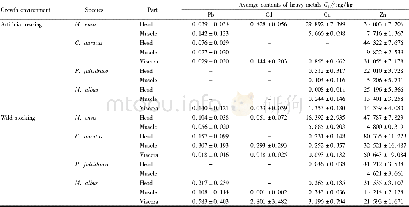《Table 1–Average amylose contents of selected T1homozygous lines.》
 提示:宽带有限、当前游客访问压缩模式
提示:宽带有限、当前游客访问压缩模式
本系列图表出处文件名:随高清版一同展现
《Systematic identification of endogenous RNA polymerase Ⅲ promoters for efficient RNA guidebased genome editing technologies in maize》
aPairwise t-test of generated lines and corresponding wild types.
The in vitro data suggested that all seven Pol III promoters operated on the CRISPR/Cas9 construct,but with mutation varying from 3.4%(U6-1)to over 21.0%(U6-6),indicating different activities.In Fig.4 a detailed example of RNA-guided Cas9 targeting the Zm Wx1 locus is shown,wherein a singleguide RNA was constructed that was driven by the promoter U6-2.An expression cassette of RNA-guided Cas9(Fig.4A)was designed to target the Zm Wx1 locus(Fig.4B).Among the 66 T0transformation-positive events from three rounds of transformation,the targeted mutation efficiencies ranged from48.5%to 97.1%.Among them,36 insertions of a single T and 15of a single A comprised the majority of the mutation types.The mutation frequencies were high,such that 32 of 66recessive wx1 mutant homozygotes exhibited a waxy phenotype,in which amylose could not be detected in the kernels of T0 plants.Selfing those families revealed that the targeted mutations all heritably produced recessive wx1 homozygous phenotypes.The kernel endosperm starch and pollen phenotypes of four randomly selected T1 families(CNW-D19,CNW-D5,CNW-D21,and CNW-D45)were scored based on KIstaining(Fig.5)and amylose content determination(Table1).In addition to the visible phenotypes of the KI staining of both the kernel endosperm starch particles and pollen cells,the amylose contents of the mutants were low to undetectable,compared with amylose contents of approximately 18%in the wild type(Table 1).These in vivo data for Zm Wx1 suggest that the U6-2 promoter could be used as a key element of CRISPR/Cas genome editing tools and will exhibit robust activity.
| 图表编号 | XD0012325500 严禁用于非法目的 |
|---|---|
| 绘制时间 | 2018.06.01 |
| 作者 | Xiantao Qi、Le Dong、Changlin Liu、Long Mao、Fang Liu、Xin Zhang、Beijiu Cheng、Chuanxiao Xie |
| 绘制单位 | Institute of Crop Science,Chinese Academy of Agricultural Sciences、Anhui Agricultural University Anhui Province、Institute of Crop Science,Chinese Academy of Agricultural Sciences、Institute of Crop Science,Chinese Academy of Agricultural Sciences、Institute |
| 更多格式 | 高清、无水印(增值服务) |
查看“Table 1–Average amylose contents of selected T1homozygous lines.”的人还看了
-

- Table 2 Average contents of heavy metals in different parts of aquatic products from Lake Taihu (±s, n=24)
-

- Table 1 Chlorophyll content in 90-21-3, D937, 099, and 835 maize inbred lines grown under control and potassium deficien





